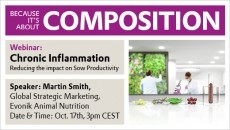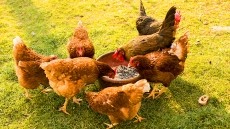Canadian co-operative downsizes facilities, looks to maintain feed production

The Canadian-cooperative announced that it would be ceasing operation at three of its feed production facilities earlier this week [May 13] citing “unprecedented competitor consolidation” and changes to the feed market.
The cooperative said that it is planning to close its production locations in Brandon, Manitoba and Melfort, Saskatchewan with operation winding down by October and August, respectively. A third production facility in Edmonton, Alberta will transfer operations to Wetaskiwin Co-op starting in September.
The move followed a strategic review that Federated Co-operative Limited (FCL) made with an outside organization, said Patrick Bergermann, associate VP of agriculture and home with FCL. That process examined the cooperative’s role and potential business development in western Canada as there has been “a significant amount of consolidation in the industry” including for both feed manufacturing and for livestock production.
“There are less small to mid-size operations, so the dynamics have changed and we’re not immune to that,” he told us.
However, FCL is seeing some support from its work with bagged feeds and feed retail, he said. “One thing that makes us unique is we’ve got a strong retail [presence],” he added.
“We did want to make sure that we had the right presence to serve packaged feed needs [along with bulk] so we have the proper facilities to serve the packaged [market],” he said.
“We expect the overall tons will be impacted a little but we’re expecting to retain the majority overall,” Bergermann said regarding the amount of feed the cooperative will generate following the facility consolidation. “There will be some bulk that we won’t be able to do but [that] will be offset by the increase in bagged production – we’re just shifting what the look of the tons is.”
The cooperative also is planning to continue generating feeds for a wide range of species including cattle, poultry, sheep and horses, he said. “We may adjust the number of offerings we have within a given livestock segment, but we want to continue to serve the various markets.”
Feed facility investments
Another outcome of consolidating the cooperative’s feed production efforts is it allows more attention and financial resources to address manufacturing in the remaining locations, said Bergermann.
None of six feed production facilities in operation are new, he said. “They require some significant investment to modernize them – trying to do that was challenging,” he added.
FCL has been investing in safety for the sites but managing all six locations started to have an effect on the ability to reinvest back into the facilities, he said.
With the planned closing, the cooperative has started a series of capital investment projects designed to support and maintain feed production at the company’s remaining locations, he said.
The revamped feed facilities will see investments in new equipment like new pellet mills along with structural replacements, Bergermann said. Current bagging systems at the sites also will be replaced.
The current packaging process for feeds is set to be exchanged for a new open-mouth stitched bag system, he said.
“We have various capital projects that have been underway for the last month,” he said. “The bagging systems will begin replacement in the late summer and early fall.”
The anticipation is that current bagged feed customers will see an improvement with the switch to the new bagging process, as the previous system had some challenges, he said. “That’s a positive shift they’ll see and as far as the bulk tons go we’re trying to minimize that, so it feels like it’s been an improvement for them as well,” he said.
















